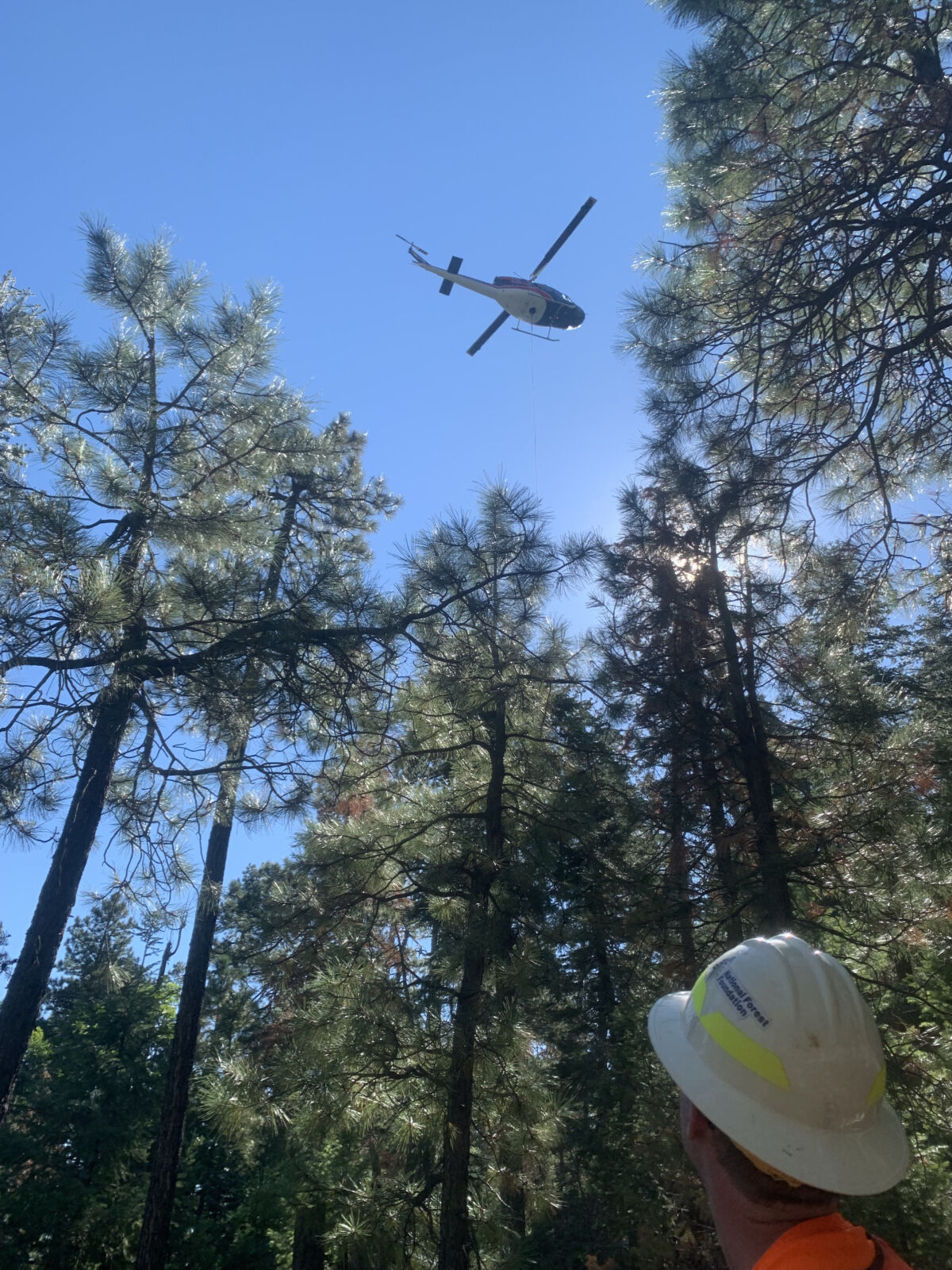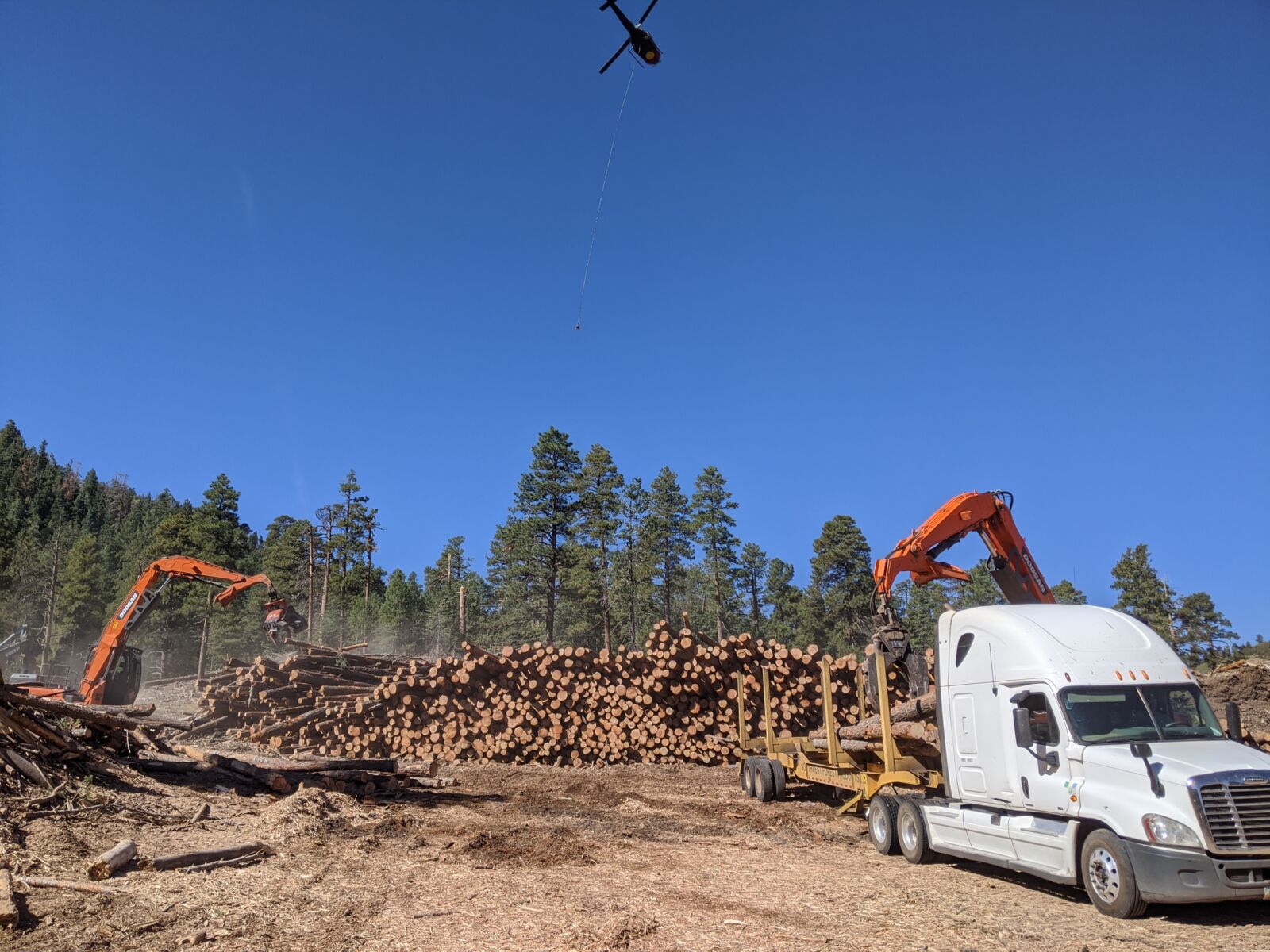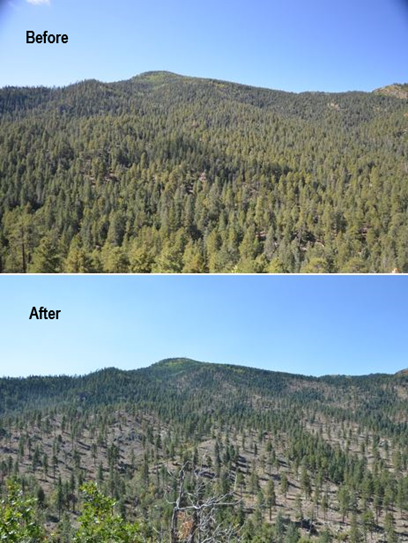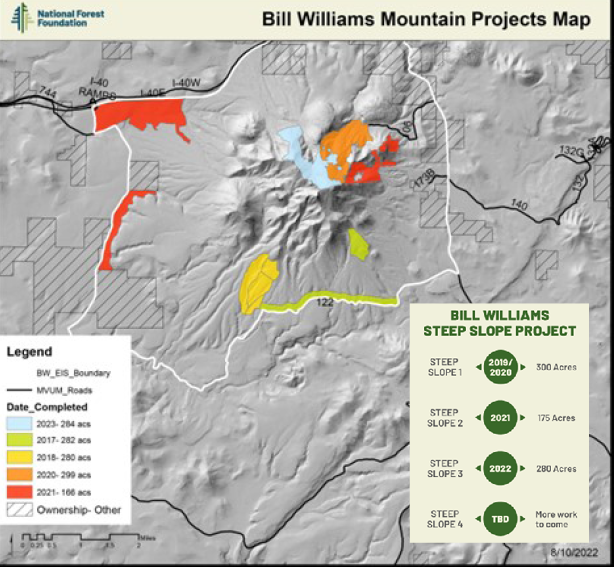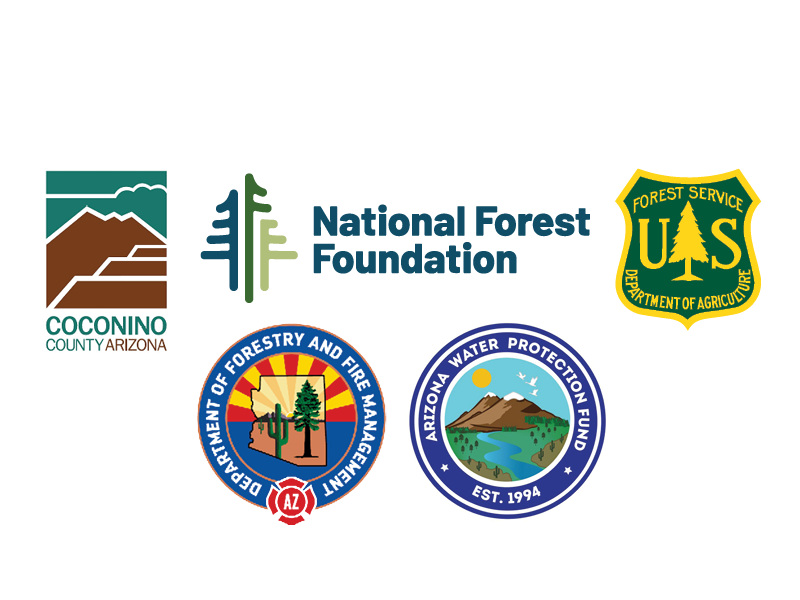The Bill Williams Mountain Steep Slope Forest Restoration Project is the most complex restoration project ever conducted by the Southwest Region of the National Forest Foundation (NFF) since establishing the Northern Arizona Forest Fund (NAFF) in 2015. Together with our partners, we are removing 100 years of overgrowth on some of the steepest terrain to protect both the landscape and the nearby city of Williams, AZ, from high-intensity fire and flooding.
When completed, the Bill Williams Mountain Restoration Project will have thinned 1,200 acres of the steepest slope at the top of Bill Williams Mountain. Those areas represent some of the highest wildfire risk and subsequent post-fire flooding. Although the estimated cost to treat these acres exceeds $30 million, the cost of doing nothing would be more than 10 times greater.
Donate to the Northern Arizona Forest Fund, which contributes to the costs of the Bill Williams Steep Slope Project.


